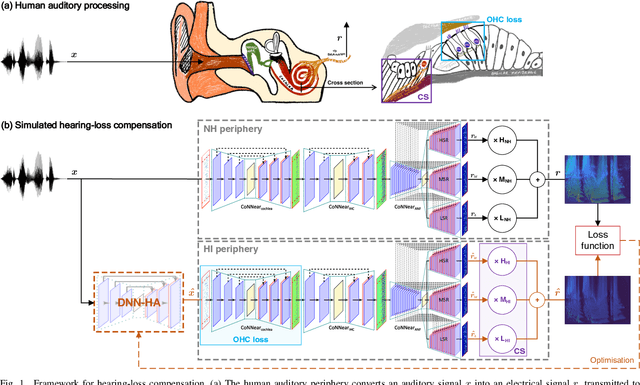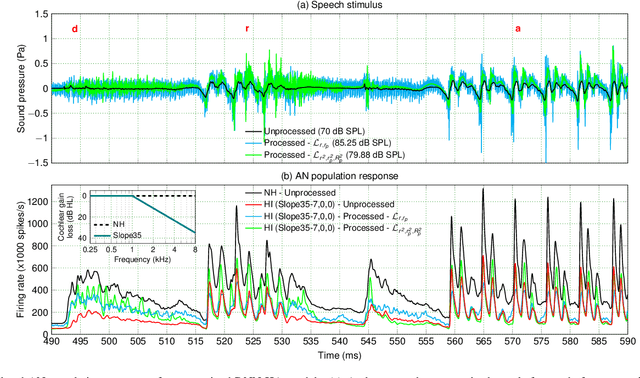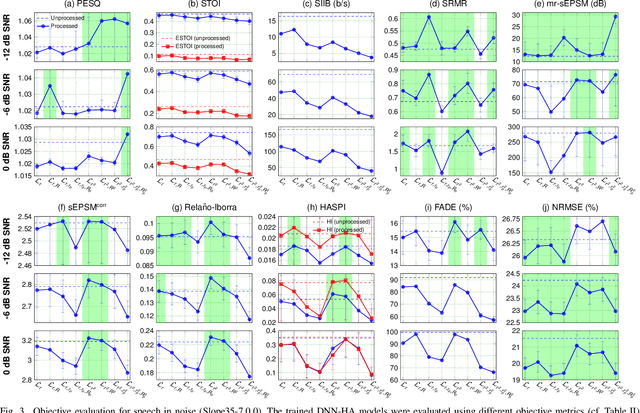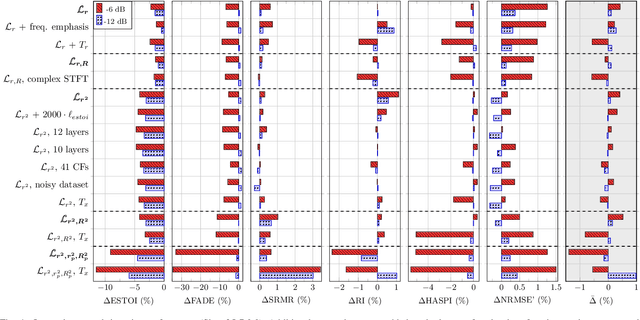Fotios Drakopoulos
A Neural-Network Framework for the Design of Individualised Hearing-Loss Compensation
Jul 14, 2022



Abstract:Even though sound processing in the human auditory system is complex and highly non-linear, hearing aids (HAs) still rely on simplified descriptions of auditory processing or hearing loss to restore hearing. Standard HA amplification strategies succeed in restoring inaudibility of faint sounds, but fall short of providing targetted treatments for complex sensorineural deficits. To address this challenge, biophysically realistic models of human auditory processing can be adopted in the design of individualised HA strategies, but these are typically non-differentiable and computationally expensive. Therefore, this study proposes a differentiable DNN framework that can be used to train DNN-based HA models based on biophysical auditory-processing differences between normal-hearing and hearing-impaired models. We investigate the restoration capabilities of our DNN-based hearing-loss compensation for different loss functions, to optimally compensate for a mixed outer-hair-cell (OHC) loss and cochlear-synaptopathy (CS) impairment. After evaluating which trained DNN-HA model yields the best restoration outcomes on simulated auditory responses and speech intelligibility, we applied the same training procedure to two milder hearing-loss profiles with OHC loss or CS alone. Our results show that auditory-processing restoration was possible for all considered hearing-loss cases, with OHC loss proving easier to compensate than CS. Several objective metrics were considered to estimate the expected perceptual benefit after processing, and these simulations hold promise in yielding improved understanding of speech-in-noise for hearing-impaired listeners who use our DNN-HA processing. Since our framework can be tuned to the hearing-loss profiles of individual listeners, we enter an era where truly individualised and DNN-based hearing-restoration strategies can be developed and be tested experimentally.
 Add to Chrome
Add to Chrome Add to Firefox
Add to Firefox Add to Edge
Add to Edge